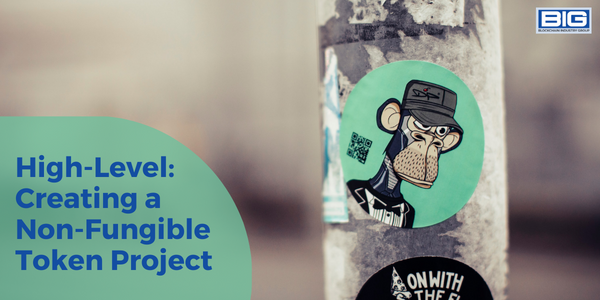
Non-fungible tokens (NFTs) have exploded in popularity in recent years, with a wide range of projects and initiatives leveraging the power of blockchain technology to create unique and valuable digital assets. If you’re interested in creating your own NFT project, here is a high-level, step-by-step guide to getting started:
- Research and analyze the market: Before diving into the development of your NFT project, it’s important to research and analyze the market to understand the needs and interests of potential users and buyers. This will help you to determine the value proposition of your NFT and how it fits into the market.
- Understand the legal and regulatory considerations: NFTs and blockchain technology are still relatively new and evolving, and there are a number of legal and regulatory considerations to keep in mind. It’s important to understand these considerations and to work with legal professionals to ensure that your NFT project is compliant and fully authorized.
- Develop the idea behind your NFT project: The first step in creating an NFT project is to come up with a clear and compelling idea. This could be a digital asset such as a piece of art or a collectible, or it could be a virtual world or game that utilizes NFTs to represent ownership of virtual assets. It’s important to have a clear vision for your project and to be able to articulate why it is unique and valuable.
- Pull together the right team: Once you have a solid idea for your NFT project, the next step is to assemble a team of professionals who can help bring your vision to life. This might include developers, designers, marketers, and other experts who can help you create and promote your NFT project.
- Decide on a blockchain and NFT marketplace: There are a number of different blockchain platforms and NFT marketplaces available, each with its own unique features and capabilities. It’s important to carefully research and consider which platform and marketplace will be the best fit for your project.
- Build a community: Building a strong community around your NFT project is essential for its success. This might involve creating social media accounts, hosting events and meetups, or engaging with users and collectors to create a sense of community and engagement.
- Create your NFT: Once you have a clear idea, a strong team, and a blockchain and marketplace in place, it’s time to create your NFT. This will involve designing and developing the asset or application, as well as creating the smart contract that will be used to represent and manage the NFT.
- Promote your NFT: The final step in creating an NFT project is to promote it and get the word out. This might involve marketing your NFT on social media, participating in NFT-focused events and conferences, or working with influencers and media outlets to spread the word.
- Test and iterate: Once you have developed your NFT, it’s important to test it and gather feedback from users to identify any issues or areas for improvement. This will allow you to iterate and fine-tune your NFT project before launching it to the public.
- Think about sustainability: It’s important to consider the long-term sustainability of your NFT project. This might involve developing a business model that generates revenue, building partnerships and relationships with other organizations, or identifying other ways to ensure the ongoing success of your project.
There are many top NFT projects that can serve as examples of successful NFT creation and promotion. For instance, CryptoKitties is a well-known NFT project that allows users to buy, sell, and breed virtual cats using NFTs. This project was successful in part due to its clear and compelling idea, as well as its strong marketing efforts, which included social media campaigns and partnerships with influencers.
Top Benefits of Decentralized Applications (DApps)
—
Top Non-Fungible Token Projects
—
Understanding How Block Chain Works
Another example is Decentraland, a virtual reality platform that uses NFTs to represent ownership of virtual land and assets. Decentraland was successful in part due to its innovative use of NFTs and its strong focus on community-building and engagement. The project also benefited from a robust marketing strategy that included partnerships with major brands and events.
These are just a few examples of the many successful NFT projects that have used these steps to create and promote their projects. By following these steps and leveraging the power of blockchain technology, you too can create a successful NFT project that stands out in the crowded NFT market.



